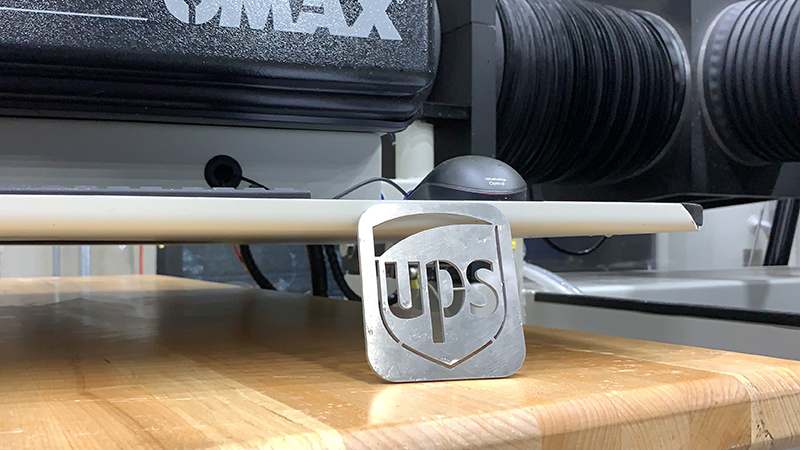These days, it can seem like customer needs change overnight.
The Global Advanced Technology Group (GATG) plays a huge role in making sure UPS’s smart logistics network is up to this challenge. They quickly identify, evaluate and implement technologies to meet customer needs today and in the future.
Two Atlanta-area tech labs give the ATG space to experiment with new concepts and see how ideas could work in real life.
Though each space has unique features and serves different needs, the Robotics AI Lab (RAIL) and the GATG rapid prototyping lab have a common purpose – to prepare for the unpredictable and fast-paced future.

RAIL at Curiosity Lab
Tucked away in a quiet suburb north of Atlanta, RAIL is a place where companies on the frontier of advanced technology development can go to pilot and perfect new products.
One of North America’s only real-world testing environments, the area is equipped with a three-mile autonomous vehicle test track and 5G-enabled smart city infrastructure. Available to use for strategic projects, the lab helps tech professionals and academic researchers collaborate on all sorts of innovations.
Step foot onto this 500-acre technology park and you’ll see everything from robotics and artificial intelligence demos to experimental drone delivery systems.
The Global Advanced Technology Group uses RAIL to collaborate with the local government on various projects piloting technology designed to benefit the community and keep up with customers’ rapidly changing tech demands.

Rapid Prototyping Lab (RPL)
At the GATG Rapid Prototyping Lab, speed is the name of the game – it’s a place where ideas can be tested quickly.
This wide open, and industrial warehouse space houses top-of-the-line tools and test equipment, giving UPS engineers the ideal environment to rapidly build and test quality prototypes for potential service solutions – answering critical questions in hours to days, rather than months to years.
One example is the OMAX 55100 Abrasive Waterjet Cutting Machine, which uses high-pressure jets of water to cut two-dimensional shapes of almost any material with laser precision.
“The machine is extremely powerful but so easy to use,” said Greg Brown, VP Advanced Technology Group. “Even novice users can quickly build functional proof-of-concept models.”
The ATG has used it for projects like modernizing the shipping bags used to hold small packages and building GPS hardware to improve the accuracy of autonomous delivery navigation.
“We make updates on many things in this lab, said Greg. “From UPS’s nylon mesh shipping bags to developing the most cost-effective real-time tracking sensors, our engineers work on diverse projects that make their way into real-world usage at lightning speed.”


